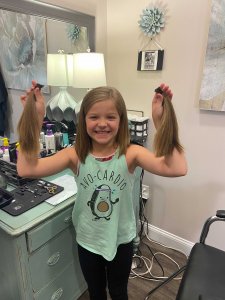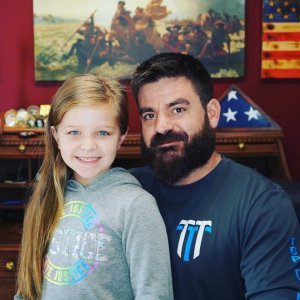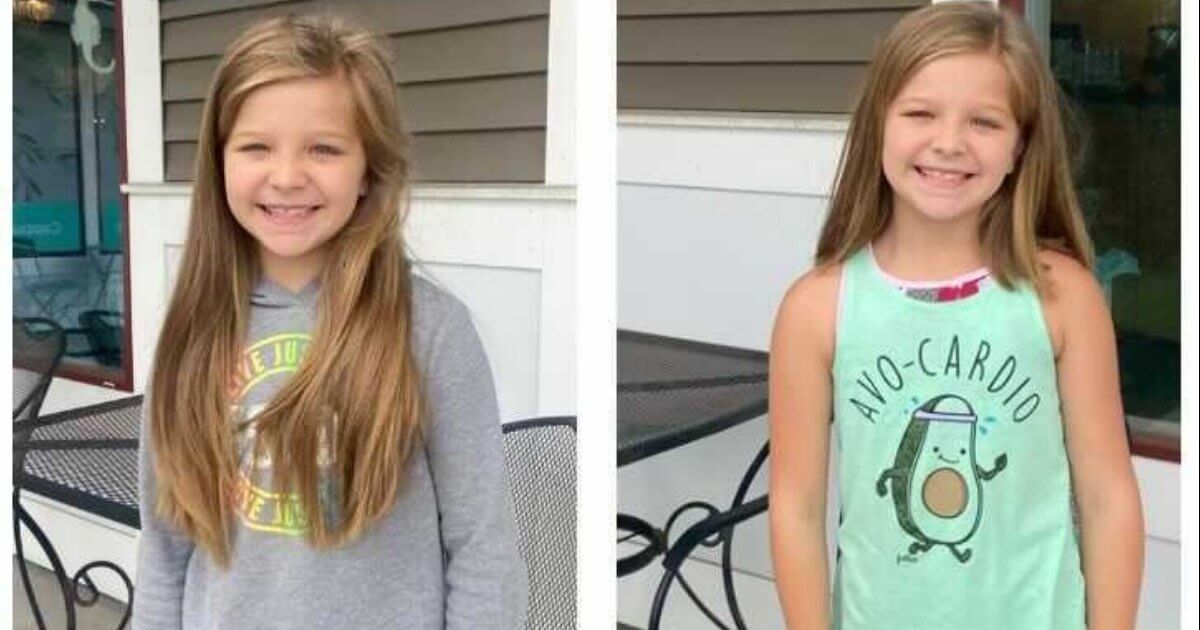Hair Donations Are Picking Back Up
- As more people return to salons to chop of their pandemic-grown hair, hair donation organizations like Locks for Love are seeing a steady increase in donations.
- For children, finding a good hair replacement option can be tricky because many wigs aren’t made for a children’s head size or lifestyle.
- Chemotherapy and radiation can both cause hair loss or thinning, but both treatment options usually don’t cause permanent hair loss.
Madonna Coffman, founder of the non-profit Locks of Love, which provides cranial prostheses for children with illnesses, said she’s been seeing a steady increase in hair donations since last fall. She says there’s “no question” that the consistent rise is attributable to an increase of people starting to venture out more and get back to the hair salons. Recognizing this, Locks for Love even started a social media ad campaign called cutthequarantine.com which gives hair donors a platform to share pictures of their donations.
Read More“It's really great, and we do not have a waiting list, we've never had a waiting list, and hopefully we never will,” she told SurvivorNet. “We're also seeing an increase now in applications from the kids because they were stuck at home, they didn't have to worry about going out and being seen.”
Coffman says donations are still not up to pre-pandemic levels, but the steady increase has her very hopeful.
“As the applications pick up and the hair donations pick up, we're really optimistic that we're gonna see pre-covid soon, maybe not this year, but hopefully next year,” she said.
Complete Guide to Wigs for Cancer Patients: Cost, Types and Where to Buy
Hair We Share, another nonprofit that collects hair and monetary donations to support individuals affected by hair loss, has also seen an increase in donations since the lifting of stay-at-home restrictions. Remarkably, they’ve seen an increase of 135%.
“I average anywhere between 75 and 100 ponytails a day,” Dean Riskin, a co-founder of Hair We Share, told TODAY.
Hava Schultz was one of the #cutthequarantine donors for Locks of Love. Her last haircut before donating was in 2019, but the long-hair lover doesn’t generally get it cut that often anyway. Then COVID-19 hit, and her next haircut was pushed even farther back.

Hava Schultz after her haircut. Photo courtesy of Hava Schultz
“Then the pandemic hit, and I was not getting my haircut for a whole new set of reasons… I [didn’t] need to expose myself for a haircut,” she said. “But then at some point during COVID, I started to realize my hair was getting really long… I’m like, you know what, at this point, it's long enough that I'm just gonna keep going and donate it when this all passes.”
But this is not the 24-year-old’s first time donating her hair. She first donated 12 inches of hair to a different organization called Chai Lifeline when she was 12 years old. June 2, 2021, marked her second 12-inch donation.
“I wanted to donate 12 inches for a couple reasons,” she said. “The kind of cool trivia reason is the fact that when I was 12 years old, I donated 12 inches. Twelve years later, at 24, I donated 12 inches which means I have donated 24 inches and I'm 24 years old… I've donated an inch of hair for every year of my own life.”
Another reason she went with 12 was because 10 is the minimum for Locks of Love. And though she, admittedly, might’ve been happier with a slightly longer look, she wanted to give a bit more so that children who want longer hair can have the option.
“There was this side of me that said you know what I can donate 12 inches and those 2 inches are gonna grow back in not too long… but whoever I'm donating to, they're not gonna get the opportunity for longer hair.”
Another person who went out of their way to donate hair to help children in need is 8-year-old Ava Small. Ava decided to donate to Children With Hair Loss another non-profit that provides human hair replacements at no cost to children and young adults facing medically-related hair loss after hearing about it from a friend at cheerleading practice.
“I thought it was really kind and cool,” she said of hearing about the organization. “And one time when I was at cheer, there was another girl that had a shirt that had ‘donating hair’ [on it], and I thought that was really kind, so I wanted to donate my hair ’cause at the time I wanted to cut my hair short.”

Ava Small after her haircut. Photo curtsey of Zac Small.
Ava says she was a little nervous before the cut, but now she’s loving her new ‘do. Her father, Zac Small, admitted he loved his little girl’s long hair, but he was very supportive of her decision when she came up with the idea.
"It was incredible to hear an 8-year-old explain how she saw this, and how she wanted to be a part of it… In no way was this driven by my wife or I. It was really, really cool that we had no part in this, she came to us with the idea,” he said. “I know that some other girl is gonna be very happy to be receiving that donation.”

Ava Small with her father, Zac Small. Photo curtesy of Zac Small.
And the donation meant a lot for Zac because it showed that their family motto “Acta, non verba” (latin for “deeds, not words”) was really starting to stick.
“She saw the girl with the shirt, and she didn’t say, ‘Oh that's cool,’ she said I want to be a part of that, and then she went and did it,” he said. “I mean it was days apart from wanting to do it to having the two ponytail that were being donated… That was very motivating as a dad… to see your child inspire you like that it really was just an incredible thing."
Hair Replacement for Children
For children suffering from medical hair loss whether it be from cancer treatment or alopecia areata or something entirely different the road to finding the right hair replacement can be difficult. Thankfully there are organizations out there, like Locks of Love and Children With Hair Loss, that are trying to be a part of the solution.
Some of the issues with hair replacement for children stems from lack of suitable options. The Locks of Love website states that “most wigs sold by retailers are made to fit adult heads, and fit poorly on a child or teenager.” The organization also points out that a lot of the wig styles are not always age-appropriate for a child and lack the staying power that kids need. That’s why Locks of Love focuses on the “cranial prosthesis.”
“We're the only organization to my knowledge that provides a cranial prosthesis for these kids as opposed to a wig, and there is a huge difference and most people don't know it,” Coffman said. “A wig is a shelf item that you can just pick and buy and go on your way. We provide the prosthesis. We actually do a mold of every child's head. The base is silicone so it's held on by vacuum which allows them to swim with it on, to be on the gymnastics team, to shower and shampoo just like we do, unlike a wig that has to be held in place with double sided tape or glue.”
Coffman decided on this hair replacement system because she believes it gave kids the best opportunity to achieve a sense of normalcy and carry out their lives however they’d like to.
"When I started locks of love many many years ago, I chose this hair replacement system because giving a kid a wig doesn't give them the security that they need to do the things that kids do," Coffman said.
Hair Loss and Cancer Treatment
Many chemotherapies do cause hair loss or thinning, and this can be an incredibly distressing side effect. It's important to speak with your doctor about any personal issues that may be caused by treatment side effects including the loss or thinning of your hair. To help patients cope with hair loss, a doctor or nurse may be able to recommend a local wig-maker or other resources that can help slow down the process.
RELATED: Preventing Hair Loss During Chemotherapy: Scalp-Cooling Devices
However, it's also important to remember that the hair loss associated with chemo is temporary. Hair loss typically begins about three to four weeks after beginning chemotherapy and continues throughout treatment. People can expect regrowth around four to six weeks after they complete treatment, but some patients may experience some changes to hair color and texture when it begins growing back.
Radiation is another treatment that can cause hair loss if hair is in the path of the tumor being treated. If you have a brain tumor being treated with radiation, for example, you may lose the hair on your head.
“If you do lose hair, it will regrow several weeks or months after treatment,” Dr. James Taylor, a radiation oncology resident at Thomas Jefferson University Hospital, told SurvivorNet. “Fortunately, for most patients, hair loss is not a concern when having radiation therapy.”
The National Cancer Institute does say that “a very high dose of radiation” can cause the hair affected by treatment to grow back thinner or not at all, but it returns more often than not.
Coping with Hair Loss
Prioritizing the mental health and happiness of your child during their cancer journey is important. And while hair loss is a difficult part of the cancer journey for children, it’s important to know that organizations like Locks of Love and Children With Hair Loss can help your child with the emotional consequences of hair loss.
“We're really proud of the fact that we can provide that foundation for the kids during the developmental years when they're becoming a person and reacting to the world as opposed to being reclusive at home or being bullied or things of that nature,” Madonna Coffman said of Locks of Love. “We try to interact with them while they're forming their outlook on the world and making them a better person and mostly making them happy."
But hair loss can, undoubtedly, be a emotional challenge for adults too. San Jose resident Teri Chow was 44 years old when she was diagnosed with ovarian cancer. She knew she would lose her hair during chemotherapy, and she even tried to prepare her family for the change by cutting her long locks into a short bob. In a previous interview with SurvivorNet, San Jose resident Teri Chow shared how she coped with her hair loss after chemotherapy treatment for ovarian cancer.
"I think it was shortly after the second round of chemo, so that would've been about four weeks after starting chemo, [my hair] started to fall out," Chow said. "It was coming out in the shower [and] it was coming out just combing [my] hair."
How Ovarian Cancer Survivor Teri Chow's Wig (& Humor) Helped Her Cope With Hair Loss
Some people choose to shave their heads right away so they don't have to watch their hair fall out, but Chow decided to start wearing a wig immediately. She even looks back on that time in her life with some humor. She would often laugh because many people didn't even realize she was wearing a wig.
"The other moms at the school didn't realized that I was going through this, and they'd compliment me on the wig and not knowing it was wig," Chow laughs. "I made the mistake to somebody I thought knew. I went, 'Oh, thank you,' And I moved the wig forward and she freaked out [and I was] like, 'Sorry, sorry, I thought you knew!'"
Then when her hair eventually started to grow back, Chow decided to switch things up and ditch the wig. She visited a hair dresser who transformed her short, curly, gray locks into a whole new look with a straightener and some dye.
And while Chow may have handled the hair loss journey with a bit more laughter than some, it's important to know that everyone's experience is individual. Feeling upset over losing your hair is very common and a completely warranted emotion.
Experts tell SurvivorNet that grieving over a cancer diagnosis often represents the end of them being a "healthy person." They encourage patients to feel through those emotions because the grief can be a crucial step to accepting the new normal and being able to push through treatment. After grieving the initial shock of hair loss, it might be easier to accept and find some positivity from there.
"I help patients acknowledge their grief so they can move on. I think the more we try to push [those feelings] away and say, 'Oh, it doesn't matter,' it tends to stick around a little longer," says Laurie Ostacher, a medical social worker at Sutter Bay Medical Foundation in the Bay Area. "If [a woman] seems like she's having trouble moving on, we explore [that too]."
Learn more about SurvivorNet's rigorous medical review process.


